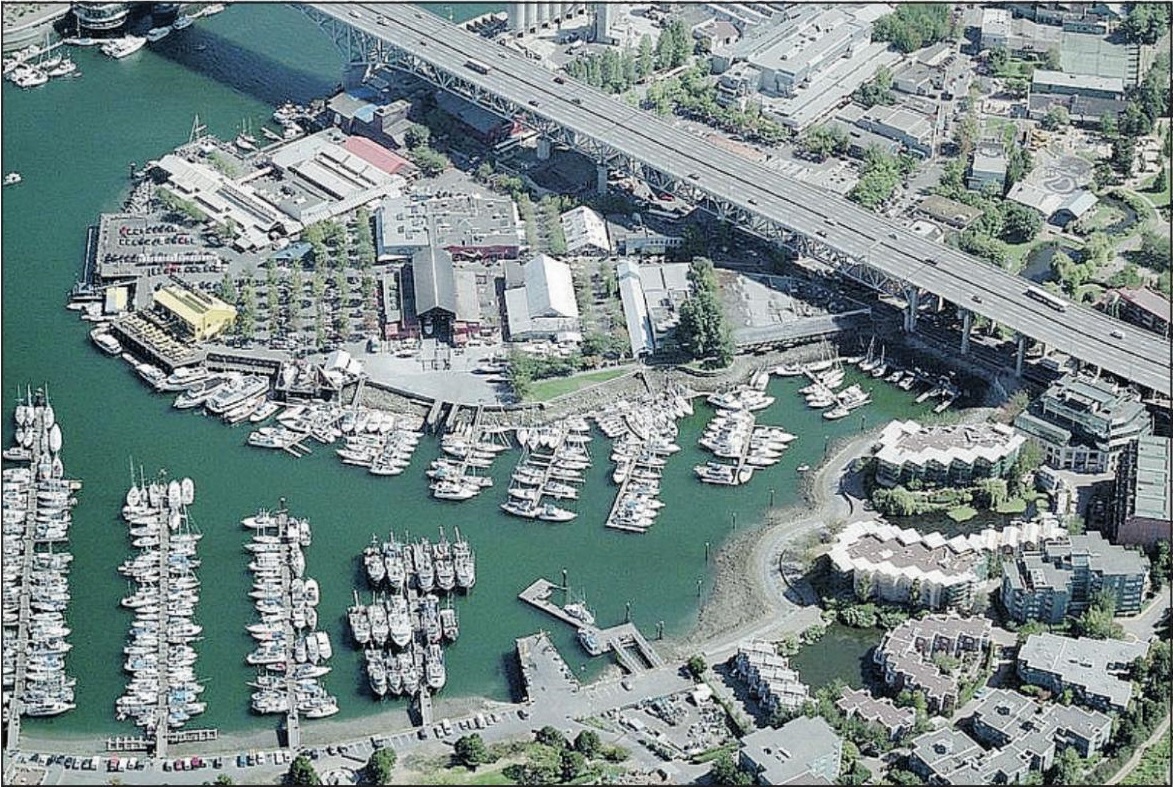
Nanaimo is a city on the east coast of south-central Vancouver Island, making it somewhat complex to get to, but it will be well worth the journey.
Nanaimo is known as the Harbour City of Vancouver isle, it is stretched down the east coast, and is British Columbia’s sixth largest city which may be surprising to some. It derives its identity from the wealth of recreation activities available – many of which are centred around the harbour situated at the centre of the city. It has a wealth of history thanks to the marina, which is also of great interest to the many visitors that make the journey over to the island every year.
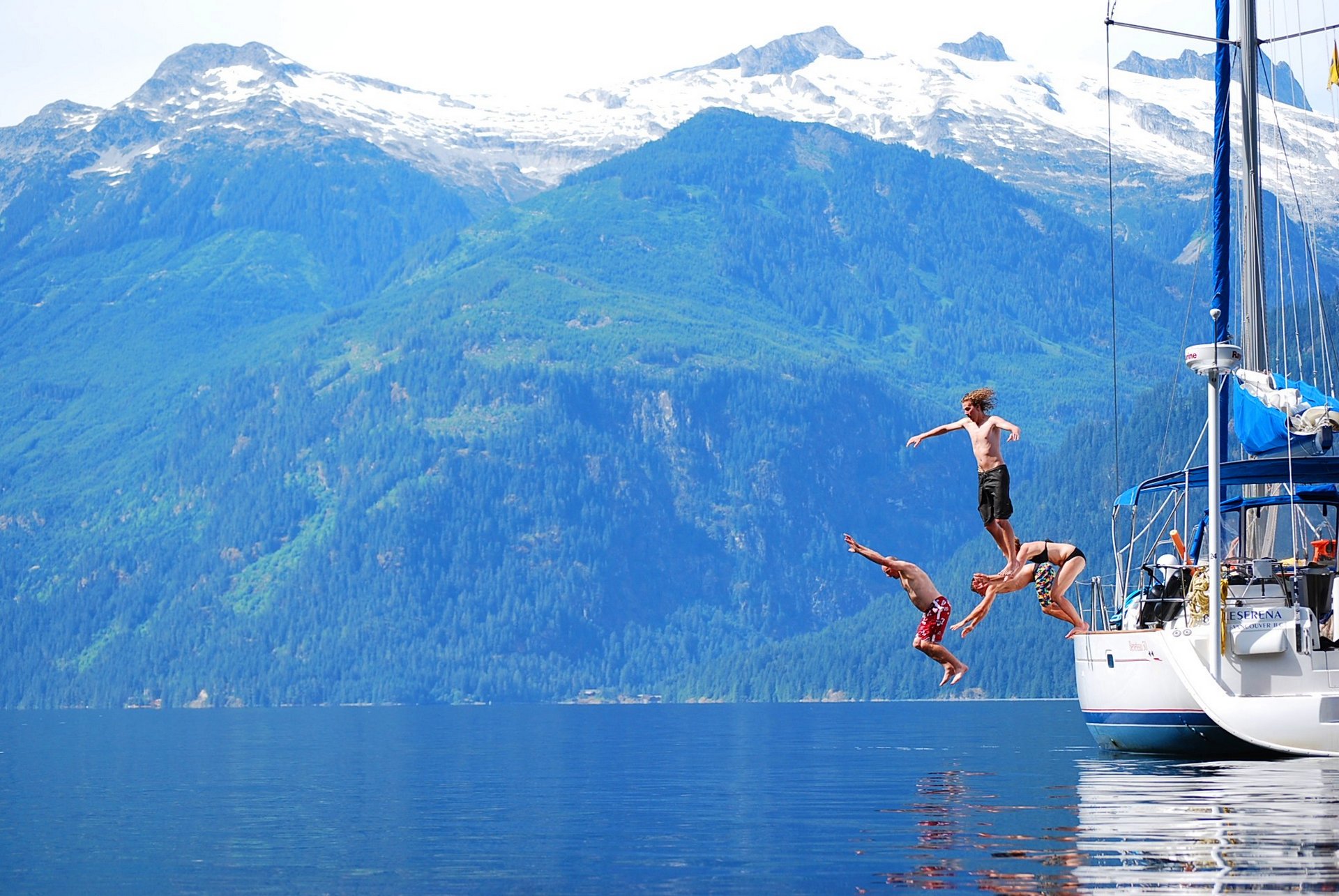
Travellers can try their hand at a number of activities including hiking, boating, biking, kayaking, scuba diving and snorkelling which all form part of the fabric of this beautiful location. Nanaimo is a bustling city, with a population of almost 85,000, and a multitude of eateries, art museums, and shopping outlets. Many visitors use Nanaimo as a central point, as it provides the perfect location to use as a base if exploiting the rest of the island. It is also a great point to access world renowned ski resorts, the wild Pacific Oceans and all they have to offer, accessible within just a couple of hours drive. There is a visitors centre which is a great place to start your trip with numerous brochures, maps, and friendly advice on how best to utilise your time in the area.
[mappress mapid="6"]
There are almost as many ways to get to Nanaimo as there are activities to do there. You can fly to Nanaimo’s inner harbour direct from Sechelt in the north, Vancouver to the north east, South Vancouver, Seattle, or Richmond. There are also indirect flights which go from Ganges, Saltspring Island, Maple Bay, Pender Island, Victoria, Whistler, or Comox. So as you can see there are numerous options, even when just looking at one mode of transport; the aeroplane.
Sea Air Seaplanes and
Harbour Air both operate float plane services from Vancouver to downtown Nanaimo. Harbour Air has the Otter and the Beaver aircrafts and these services tend to operate hourly between 7am and 6pm. A rough cost is about $70. The planes are only small, and so reservations ahead of schedule are heavily recommended as they are often utilised by businessmen. Flights are incredibly short, and so are a quick way to get to the desired destination, but are not the only option. In peak months (May to September) Kenmore Air also offers one daily scheduled plane service. If travelling from further afield on an air Canada flight, one can add an air Canada Jazz service from Vancouver at only a small additional cost.
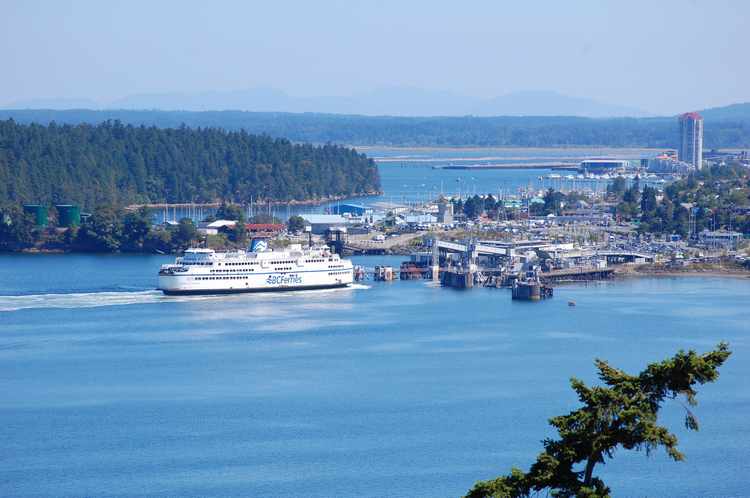
The far more popular option with travellers is the
ferry. There are numerous ferry routes into the Departure Bay and Duke Point ferry terminals. You can jump on a ferry from Tsawwassen which is just south of Vancouver, to Swartz Bay which is near to Victoria, or to Duke Point just south of Nanaimo. Ferries also travel from Horseshoe Bay which is north of Vancouver directly to Departure Bay in Nanaimo which is the closest to all the action downtown. Duke point is somewhat further away, and so unless you are staying near there, or have hired a car, or got on a bus, locals suggest it is best to use the Departure Bay terminus. It is important to pre-book where possible because ferries get very busy, and so it is best to err on the side of caution. It is of course cheaper to be a foot passenger than to drive, by foot you can expect to pay around $20, and by car around $50 each way. Departure Bay is served by Nanaimo Regional Transit, Greyhound, and Tofino Bus. All of which have offices within the ferry terminal.

You cannot take the train to Vancouver Island, but you can jump on the Amtrak who’s Cascades route links many cities to Surrey, Richmond, and Vancouver where you can hop on the aforementioned flights or ferries. There is also a train from Victoria to Nanaimo, but it only runs once a day and can be found under the journey name Victoria-Courtenay. Via Rail also has a daily passenger train between Courtenay and Victoria. Nanaimo railway station suffered from a fire back in 2007, but has since been rebuilt successfully. There is still no bridge connecting rail services to the mainland, but trains are a good way to travel from town to town across the island. There is also the
Greyhound rail option to get to Victoria, and from there you can easily to Nanaimo by flight or bus. If travelling from the US, locals suggest the Greyhound is the best line to get because it will connect with Greyhound Canada at Pacific Central Station in Vancouver, where you can get a bus to Nanaimo, or Victoria (on Pacific Coach Lines). Of course, the Amtrak Cascades stops there too, as does Via Rail, but the schedules are limited and the ticket prices are usually higher.

Similarly, there are no bus routes from the mainland to the Island other than those that go on the ferry. The bus station is in the same location as the train station and so it is quite easy to way up your options when travelling from Vancouver. It is very easy to get Victoria from Vancouver with bus routes that utilise the numerous ferry terminals and so hiring a car is not always a necessity, nor is walking. The bus also stops in Richmond, and so whatever your starting point, it is worth looking into the different options available to you dependent on your day and time of travel, as some options may be cheaper or more convenient than others. However, not all buses do board the ferry, and this could mean a long walk to or from the ferry terminus depending on your specific end location, and so ensure that you have checked the route thoroughly. Buses are not always frequent, and so best to check your timings ahead of your journey and have a back-up plan just in case.
Or you could take the Skytrain from Main Street to Granville station. You would catch the
Horseshoe Bay bus, and it would let you get off right in front of the foot passenger ticket booth for the ferries at Horseshoe Bay, where you would then catch the f

erry to Nanaimo. You would need a zone 2 fare for the entire trip. Lots of people travel to the ferry that way; most of the ones in line on Georgia will be going to Nanaimo or beyond.
You could also hire a car to drive across to the island using the ferry. Or hire a car in Victoria to travel up the island to your final destination. You must pick the combination of travel options that work best for you. That may be flight then bus, flight then car, train then ferry, car then ferry, or any other combination of those. You may even chose to hitch if you are an adventurer! Again this is good to look into in advance, you may also want to consider what kind of car or vehicle will be most suitable for your journey depending on the type of trip – a 4x4 for instance may prove more useful if you are going hiking or the like.

Once there, however you decide to get there, there are numerous places to explore. There is the old historic downtown which is divided into quarters (even though there are three of them). The Old City quarter has multiple restaurants, and heritage sites and buildings. The Arts district in the city’s centre is a great quirky place boasting art galleries and performance spaces. Last but not least, Nanaimo’s famous waterfront, which is peppered with public plazas, shops, luxury dining, parkland, and to top it all off a lagoon where you can take a dip should the mood catch you.
North Nanaimo is known as the shopping quarter, with malls littered along the highway. There are also excellent hiking and diving spots around this area.

Westside is known more for being the area for outdoorsy types. It boasts Westwood Lake which is perfect for swimming, and is even staffed in the summer. There are sprawling park lands perfect for mountain biking and trailing including to Nanaimo’s highest peak in Mount Benson. South Nanaimo, towards Cedar is popular for those looking to see rural farms, orchards, and experience the communities that work them. Cranberries, blueberries and apples are farmed here as well as numerous vegetables. The Sunday farmers’ marker is a must. For the more adventurous, there is also the opportunity to run a tree top obstavle course, and bungee jump.

From Nanaimo you can also access Protection Island that is home to Canada’s one and only floating pub, and historic picturesque Newcastle Island. Gabriola Island is also close by, which is a popular spot for artists and photographers. All of which are accessible by one of Nanaimo’s two busy ferry ports.
So you see there are numerous ways to get to this stunning location. It does seem that most travellers do choose ferry over aeroplane. Running every two hours from numerous ports on the mainland, they are the easiest way to get to Nanaimo. They are also rarely longer than an hour and a half long. But whichever way you chose to get there, you are sure to not be short of things to do in Nanaimo – Victoria’s little cousin.
photo credit: www.cknw.com, www.vifreightbyrail.ca, www.nanaimo.ca, www.rockwoodhouse.ca
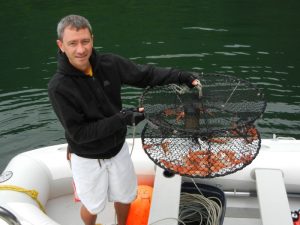 Have a good look through the kitchen area and work out what equipment you have and more importantly if there is any essential equipment you are missing. If there are dishes you’d like to cook
Have a good look through the kitchen area and work out what equipment you have and more importantly if there is any essential equipment you are missing. If there are dishes you’d like to cook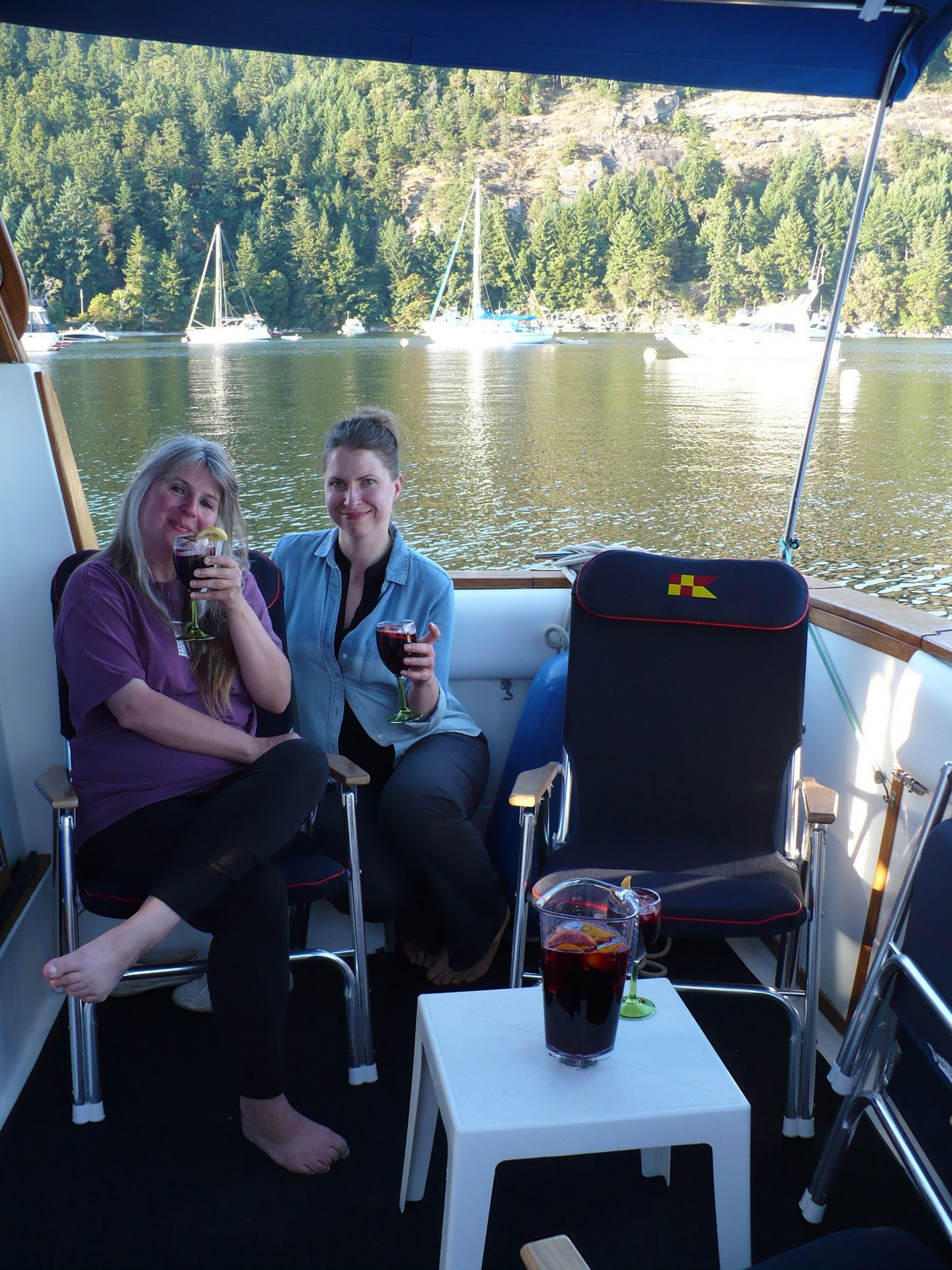 For most people part of being on holiday is relaxing with some great wine and a few beers. Keep enough on board to be merry, but remember a completely liquid diet is not recommended. Boxes of wine and cans are easier to store than bottles.
For most people part of being on holiday is relaxing with some great wine and a few beers. Keep enough on board to be merry, but remember a completely liquid diet is not recommended. Boxes of wine and cans are easier to store than bottles.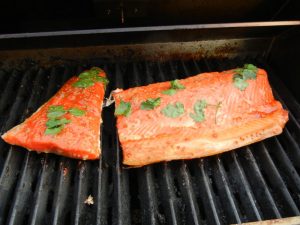 One pot wondersSuch as a stew, fajitas, soup, stir fry, Risotto.
One pot wondersSuch as a stew, fajitas, soup, stir fry, Risotto.
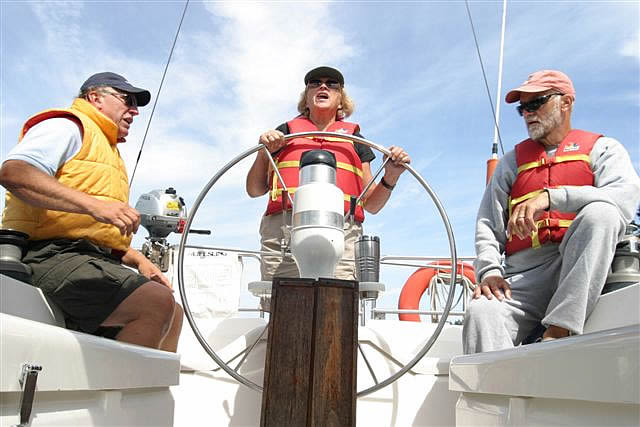
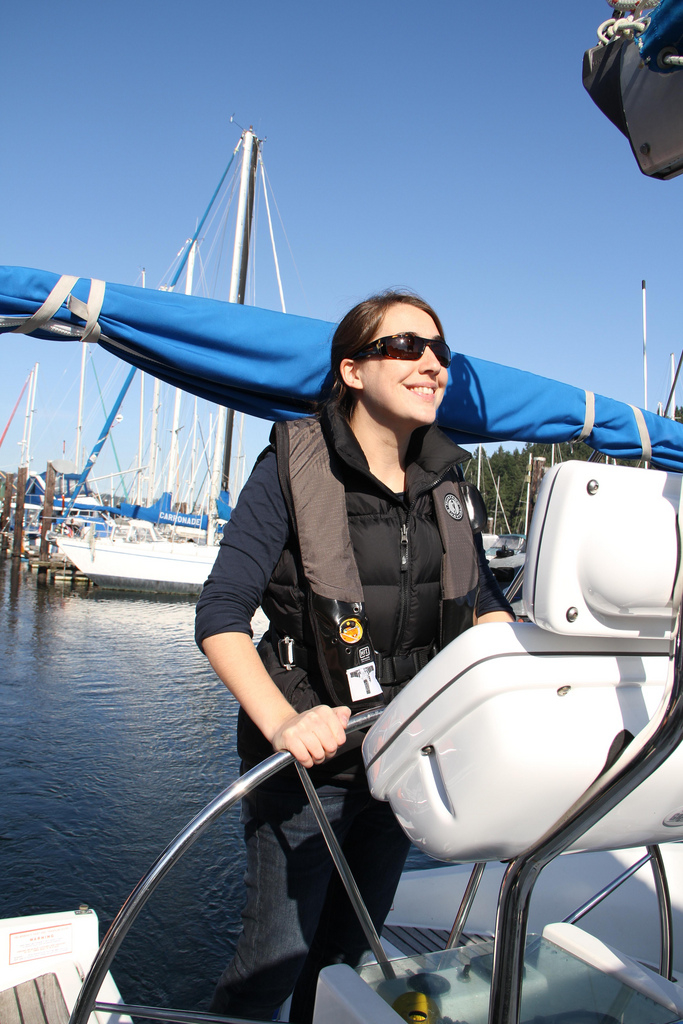
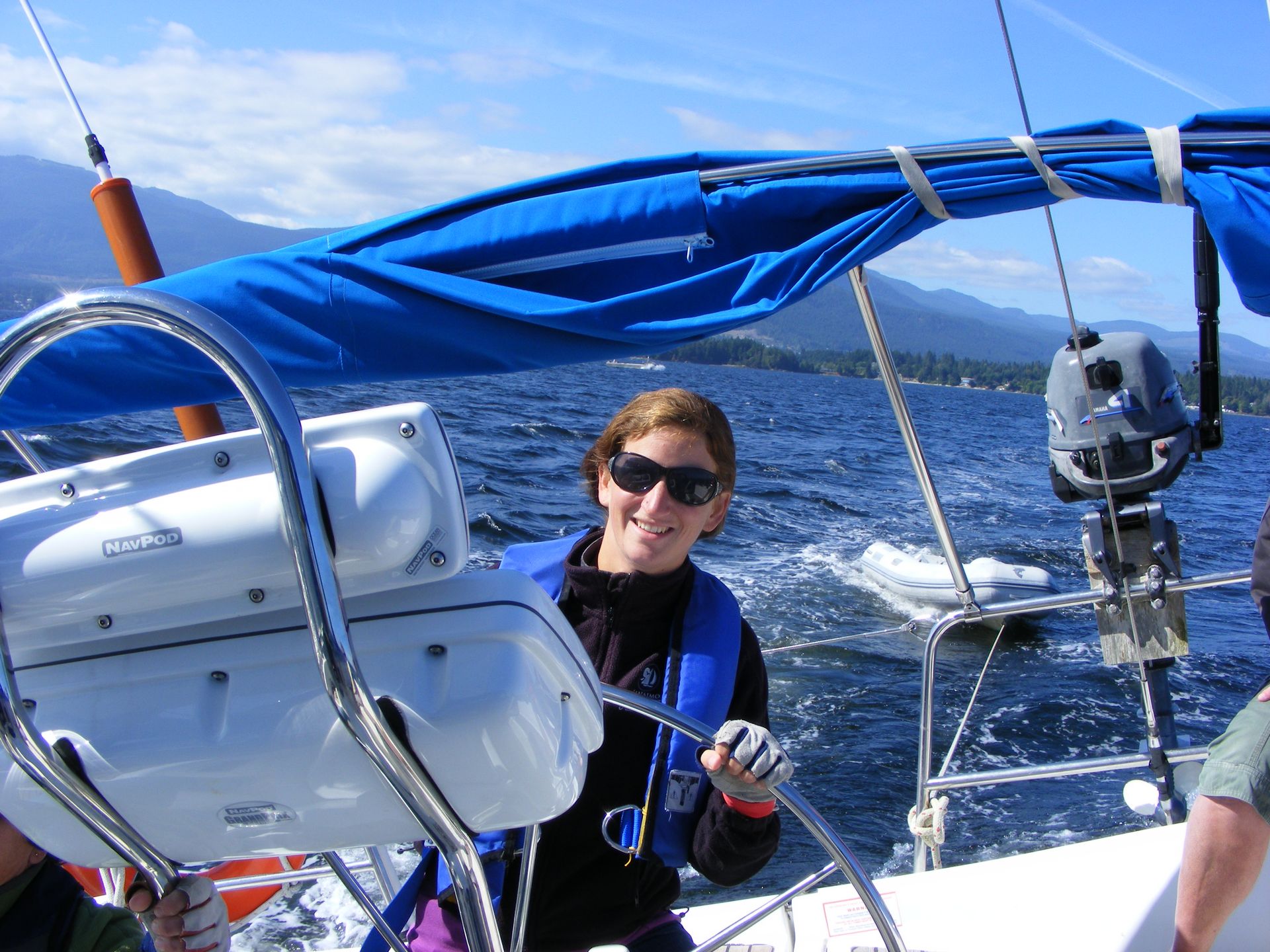 Women tend to have a calmer demeanour when learning all together outside of the company of men. It is not that men are not liked, or appreciated, (we can meet up with them after the lesson) it
Women tend to have a calmer demeanour when learning all together outside of the company of men. It is not that men are not liked, or appreciated, (we can meet up with them after the lesson) it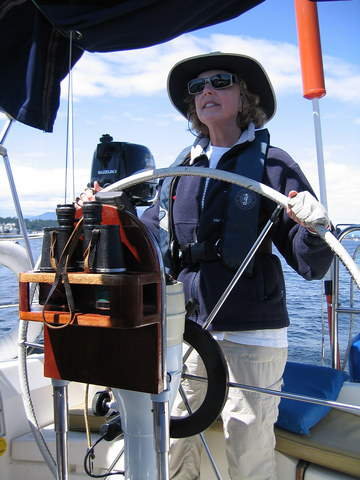
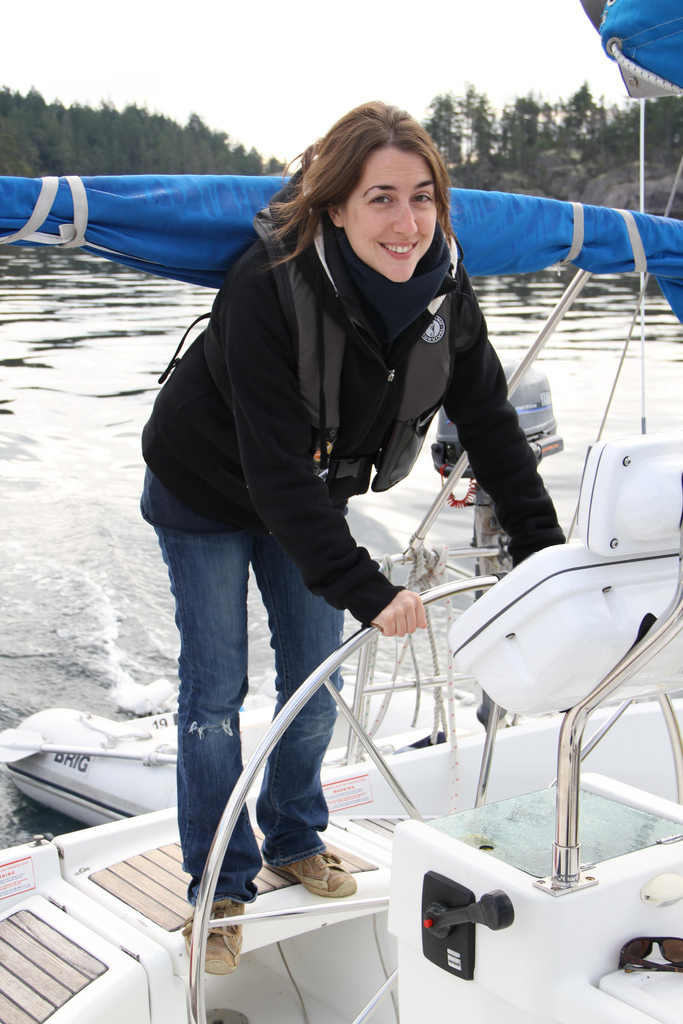 and the women who have taken part in such courses cite the single gender element as being a big contributory factor to their interest.
and the women who have taken part in such courses cite the single gender element as being a big contributory factor to their interest. You may question whether it is a good idea to bring children along on a yacht charter in Vancouver, and you would be right to give it some serious consideration for many reasons. There is safety to consider and the worry that being cooped up will cause boredom for the young ones resulting in stress for the adults. However, there are more reasons to take them along with you, as long as you plan and take necessary precautions. There are four key things to contemplate beforehand:
You may question whether it is a good idea to bring children along on a yacht charter in Vancouver, and you would be right to give it some serious consideration for many reasons. There is safety to consider and the worry that being cooped up will cause boredom for the young ones resulting in stress for the adults. However, there are more reasons to take them along with you, as long as you plan and take necessary precautions. There are four key things to contemplate beforehand: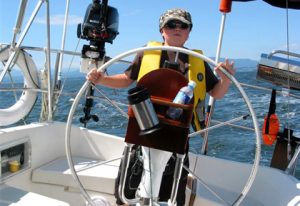 Discussing the safety rules of a charter before the trip is a must. The children must be briefed as to where the safety equipment is (such as life jackets and other floatation aids), and how to use it. This may seem daunting, but actually, kids love to play pirate, and adore boats. They will really enjoy the learning experience as they will see it as an important part of their role on board. Children love to be given ownership over things, and feel a part of it all. Rule enforcement will be necessary, but you can do it in such a way that is fun, engaging, and not at all dictatorial. The main safety rules are:
Discussing the safety rules of a charter before the trip is a must. The children must be briefed as to where the safety equipment is (such as life jackets and other floatation aids), and how to use it. This may seem daunting, but actually, kids love to play pirate, and adore boats. They will really enjoy the learning experience as they will see it as an important part of their role on board. Children love to be given ownership over things, and feel a part of it all. Rule enforcement will be necessary, but you can do it in such a way that is fun, engaging, and not at all dictatorial. The main safety rules are: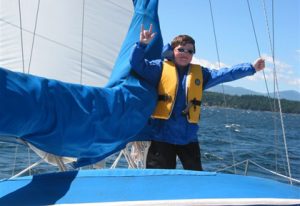 Always wear a life jacket when outside of the cockpit (for young ones it is best that they have their own special life jacket to ensure that it fits correctly)
Always wear a life jacket when outside of the cockpit (for young ones it is best that they have their own special life jacket to ensure that it fits correctly)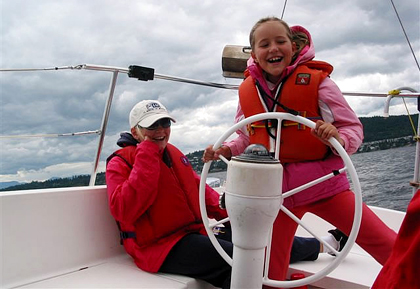
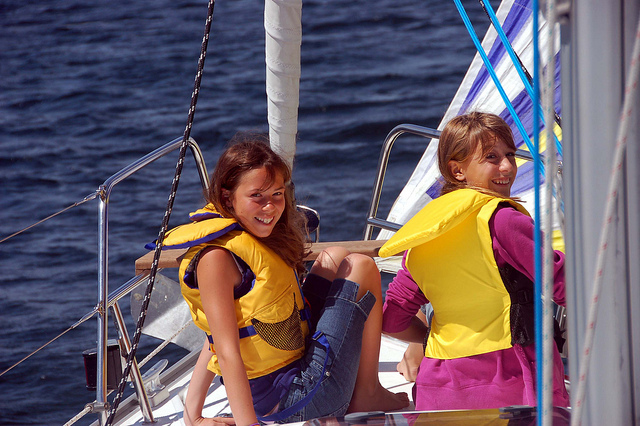 equipment always provides a big win, and can keep children amused for hours, but it is important to ensure they know how to use it correctly before plunging into the sea. Depending on your destination you will also need to ensure you are prepared for the elements. Sunscreen, loose clothing, hats and shades are all necessary in the heat of the sun. Layers and Vaseline for those chapped lips are required for colder conditioners. Bottled water must also be in ample supply.
equipment always provides a big win, and can keep children amused for hours, but it is important to ensure they know how to use it correctly before plunging into the sea. Depending on your destination you will also need to ensure you are prepared for the elements. Sunscreen, loose clothing, hats and shades are all necessary in the heat of the sun. Layers and Vaseline for those chapped lips are required for colder conditioners. Bottled water must also be in ample supply.
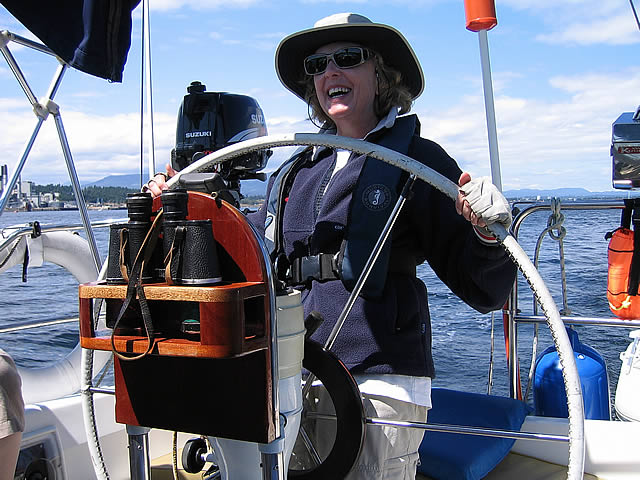 The sailing in Vancouver ranges across a wide area, from the Gulf Islands, Desolation Sound, the San Juan Islands and the Sunshine coast, an area that stretches along the Strait of Georgia from Howe Sound to Desolation sound, with many communities to see and superb scenery to enjoy.
The sailing in Vancouver ranges across a wide area, from the Gulf Islands, Desolation Sound, the San Juan Islands and the Sunshine coast, an area that stretches along the Strait of Georgia from Howe Sound to Desolation sound, with many communities to see and superb scenery to enjoy.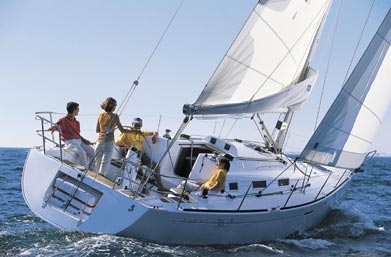 From April to May, you can expect changeable weather. It is normal to expect strong winds in these spring months, but the weather is warming up and it is a beautiful time of year, with everything coming into bloom. It is also a fabulous time of year for wildlife viewing around Vancouver island, you may catch sight of Pacific Grey Whales as they migrate to Alaska, or some grizzly and black bears who are coming out of their hibernation to find food on the coastal shores. The Summer months between June to September, you can expect around 8-12 knots of thermally generated winds and relatively dry conditions. Summer is a great time of year for sailing in Vancouver if you are a confident sailor, but have slightly less confidence in varied sailing conditions, as July and August offer light winds and typically lovely weather, so perfect for enjoying the stunning national and provincial parks in the area.
From April to May, you can expect changeable weather. It is normal to expect strong winds in these spring months, but the weather is warming up and it is a beautiful time of year, with everything coming into bloom. It is also a fabulous time of year for wildlife viewing around Vancouver island, you may catch sight of Pacific Grey Whales as they migrate to Alaska, or some grizzly and black bears who are coming out of their hibernation to find food on the coastal shores. The Summer months between June to September, you can expect around 8-12 knots of thermally generated winds and relatively dry conditions. Summer is a great time of year for sailing in Vancouver if you are a confident sailor, but have slightly less confidence in varied sailing conditions, as July and August offer light winds and typically lovely weather, so perfect for enjoying the stunning national and provincial parks in the area.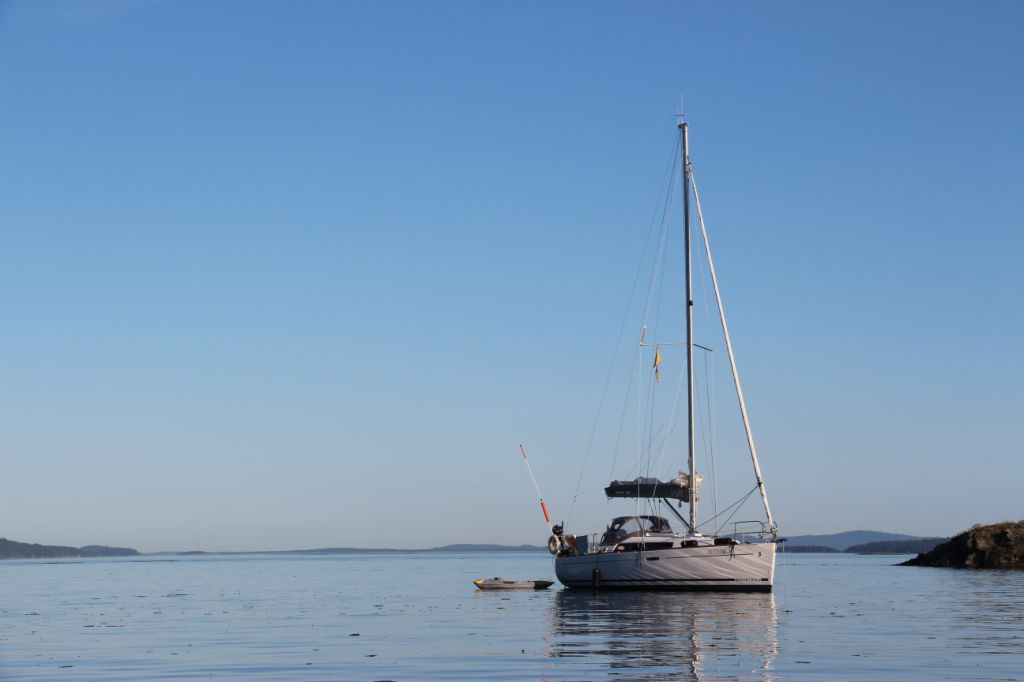


 Nanaimo is a city on the east coast of south-central Vancouver Island, making it somewhat complex to get to, but it will be well worth the journey.
Nanaimo is a city on the east coast of south-central Vancouver Island, making it somewhat complex to get to, but it will be well worth the journey. Travellers can try their hand at a number of activities including hiking, boating, biking, kayaking, scuba diving and snorkelling which all form part of the fabric of this beautiful location. Nanaimo is a bustling city, with a population of almost 85,000, and a multitude of eateries, art museums, and shopping outlets. Many visitors use Nanaimo as a central point, as it provides the perfect location to use as a base if exploiting the rest of the island. It is also a great point to access world renowned ski resorts, the wild Pacific Oceans and all they have to offer, accessible within just a couple of hours drive. There is a visitors centre which is a great place to start your trip with numerous brochures, maps, and friendly advice on how best to utilise your time in the area.
Travellers can try their hand at a number of activities including hiking, boating, biking, kayaking, scuba diving and snorkelling which all form part of the fabric of this beautiful location. Nanaimo is a bustling city, with a population of almost 85,000, and a multitude of eateries, art museums, and shopping outlets. Many visitors use Nanaimo as a central point, as it provides the perfect location to use as a base if exploiting the rest of the island. It is also a great point to access world renowned ski resorts, the wild Pacific Oceans and all they have to offer, accessible within just a couple of hours drive. There is a visitors centre which is a great place to start your trip with numerous brochures, maps, and friendly advice on how best to utilise your time in the area.


 erry to Nanaimo. You would need a zone 2 fare for the entire trip. Lots of people travel to the ferry that way; most of the ones in line on Georgia will be going to Nanaimo or beyond.
erry to Nanaimo. You would need a zone 2 fare for the entire trip. Lots of people travel to the ferry that way; most of the ones in line on Georgia will be going to Nanaimo or beyond. Once there, however you decide to get there, there are numerous places to explore. There is the old historic downtown which is divided into quarters (even though there are three of them). The Old City quarter has multiple restaurants, and heritage sites and buildings. The Arts district in the city’s centre is a great quirky place boasting art galleries and performance spaces. Last but not least, Nanaimo’s famous waterfront, which is peppered with public plazas, shops, luxury dining, parkland, and to top it all off a lagoon where you can take a dip should the mood catch you.
Once there, however you decide to get there, there are numerous places to explore. There is the old historic downtown which is divided into quarters (even though there are three of them). The Old City quarter has multiple restaurants, and heritage sites and buildings. The Arts district in the city’s centre is a great quirky place boasting art galleries and performance spaces. Last but not least, Nanaimo’s famous waterfront, which is peppered with public plazas, shops, luxury dining, parkland, and to top it all off a lagoon where you can take a dip should the mood catch you. Westside is known more for being the area for outdoorsy types. It boasts Westwood Lake which is perfect for swimming, and is even staffed in the summer. There are sprawling park lands perfect for mountain biking and trailing including to Nanaimo’s highest peak in Mount Benson. South Nanaimo, towards Cedar is popular for those looking to see rural farms, orchards, and experience the communities that work them. Cranberries, blueberries and apples are farmed here as well as numerous vegetables. The Sunday farmers’ marker is a must. For the more adventurous, there is also the opportunity to run a tree top obstavle course, and bungee jump.
Westside is known more for being the area for outdoorsy types. It boasts Westwood Lake which is perfect for swimming, and is even staffed in the summer. There are sprawling park lands perfect for mountain biking and trailing including to Nanaimo’s highest peak in Mount Benson. South Nanaimo, towards Cedar is popular for those looking to see rural farms, orchards, and experience the communities that work them. Cranberries, blueberries and apples are farmed here as well as numerous vegetables. The Sunday farmers’ marker is a must. For the more adventurous, there is also the opportunity to run a tree top obstavle course, and bungee jump. From Nanaimo you can also access Protection Island that is home to Canada’s one and only floating pub, and historic picturesque Newcastle Island. Gabriola Island is also close by, which is a popular spot for artists and photographers. All of which are accessible by one of Nanaimo’s two busy ferry ports.
From Nanaimo you can also access Protection Island that is home to Canada’s one and only floating pub, and historic picturesque Newcastle Island. Gabriola Island is also close by, which is a popular spot for artists and photographers. All of which are accessible by one of Nanaimo’s two busy ferry ports.